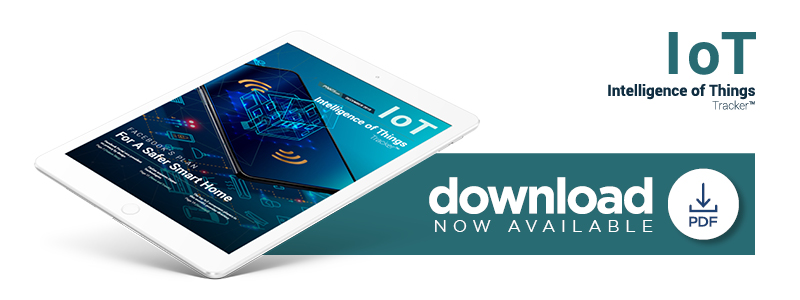Facebook Portal’s Approach To Smart Home Privacy
Timing can be everything. On the heels of a series of high-profile data compromises, Facebook introduces a smart home device that connects users to their network of friends. In this month’s Intelligence of Things Tracker, Rafa Camargo, VP of Facebook’s Portal team, explains what went into the design of Portal — and how data privacy is at the center of that design.
Connected technology may be as feared as it is loved. According to recently published research, privacy concerns have caused 66 percent of American and European early adopters to delay smart home device purchases. With even the most eager consumers keeping a wary eye on new features, platform providers must make careful design choices to woo privacy-conscious customers.
Launching a new smart home product in this volatile market might seem risky — especially for a company such as Facebook, which was plagued by a major privacy scandal. In June, 47 percent of its users said they shared less content because of privacy concerns. Despite its users’ worries, the social media giant launched the Portal smart home device in October. The device aims to bring users closer together with features supported by a voice assistant, a smart camera with tracking and automatic zoom and a microphone that can distinguish between voices and background noise.
Rafa Camargo, vice president of the Portal team, said the device could support both social video calling and business activities, such as remote tutoring and conference calls. But for these use cases to succeed, the team must present a positive outlook for the device’s smart features to reassure customers concerned about security. In a recent interview with PYMNTS, Camargo discussed how Facebook strives to make design choices — including hardware and software features — that help customers feel safe.
“It is a product for the home and a product that has cameras and microphones — so, from the very beginning of the design, we were focused on privacy,” Camargo said. “We designed it for privacy from the onset.”
Privacy measures
Modern consumers want to know what’s being done with their data and who has access to it. To successfully implement connected technology, providers must assure customers that devices are being attentive, but that they aren’t spying.
To find that balance between convenience and surveillance, Facebook turned to physical reassurance. Portal comes with a camera lens cover and a button that turns off the camera and microphone, Camargo explained.
Other features give Portal users additional control over their information. They can view and delete a voice command activity log, for example, and users who enable Amazon Alexa on the device can use the Alexa app to manage voice assistant requests. Currently, customers cannot record their calls, which, Camargo said, was intended to provide “peace of mind,” noting that the capability could be added in the future if enough users request it.
Securing communications
Allowing users to manage their data and devices isn’t enough — companies must also make sure hackers don’t gain access. One way to safeguard information on the device, Camargo said, is to limit transmissions, which Portal devices could achieve by handling computing functions themselves, rather than hosting them on the cloud.
“If you look at IoT, there’s been a tendency to have very dumb devices and have all the smartness on the cloud,” Camargo said. “Our device is very different. From the beginning, we decided to make a device that is very powerful, so that all its smartness and AI [for the smart camera] would run locally.”
That artificial intelligence (AI) is designed to recognize humans — as opposed to furniture, for instance — by noting presence of features such as a head, shoulders and legs, according to a written statement from Camargo. He said the device does not identify or remember specific individuals, however. Under Portal’s device-based computing approach, these analyses are performed on the device itself.
“There are a lot of analytics that we need to run on the video,” he said. “We designed the hardware from the ground up to be capable of running that locally, so that analysis never leaves your home.”
Additional security efforts include automatic updates, as well as routing detection and communications encryption. Another step, Camargo said, involves trying to prevent the devices from running questionable software. The Portal team achieves this by allowing users to run only Facebook-approved apps.
Security and privacy efforts will likely become more important as the smart device space grows. As companies continue to develop clever uses for IoT, robust safety measures could mean the difference between customers staying away or excitedly picking up the latest invention.

